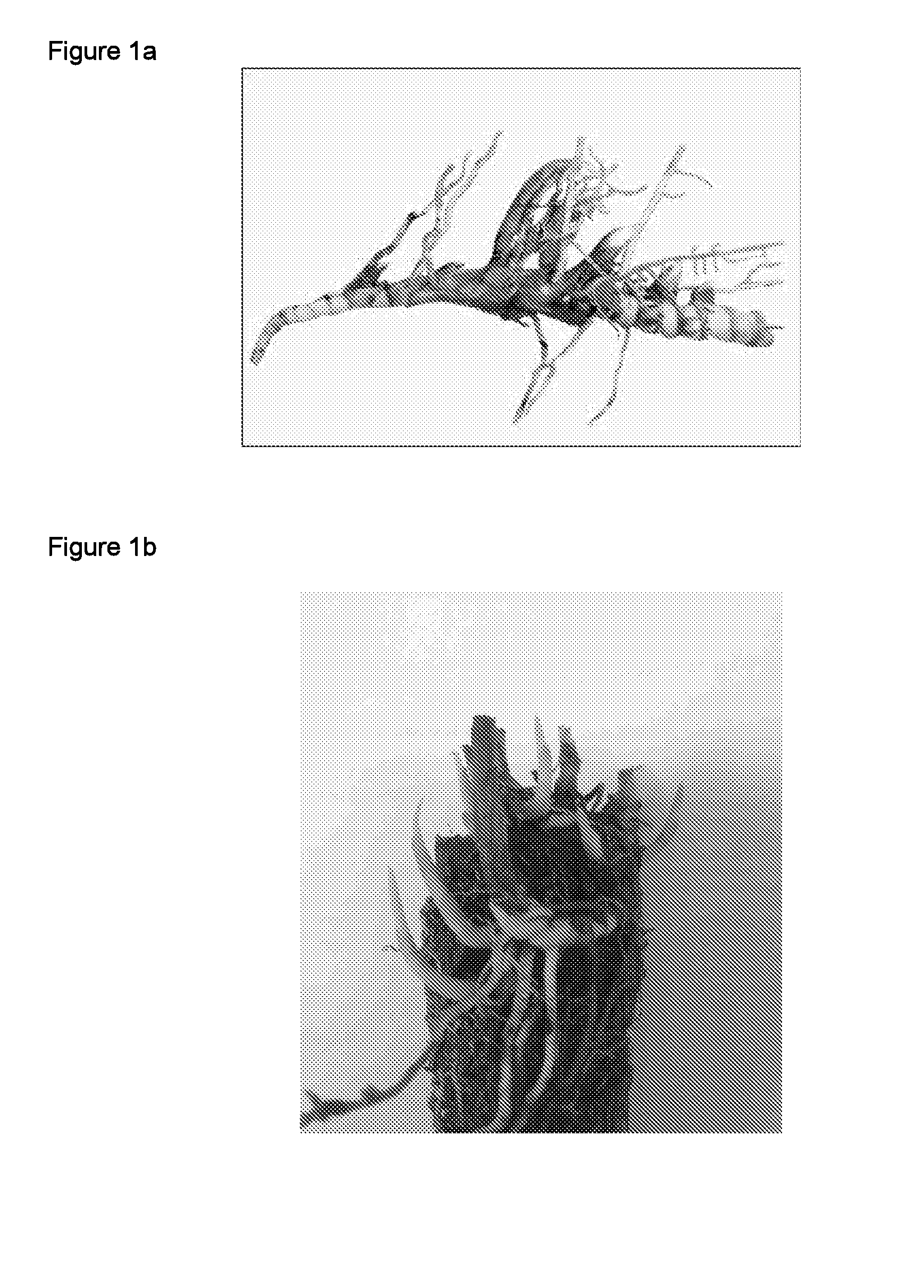Plant Propagation
a plant and root technology, applied in the field of plant propagation, can solve the problems of large root complexes, large rooted complexes, and severe restrictions on its commercial introduction
- Summary
- Abstract
- Description
- Claims
- Application Information
AI Technical Summary
Benefits of technology
Problems solved by technology
Method used
Image
Examples
example 1
Micropropagation and Multiplication of Miscanthus
[0145]Explant material was selected from disease-free Miscanthus plant material. The explant material was surface sterilized, rinsed in sterilized water and seeded onto an agar-based growth medium containing nutrients (sucrose and other standard nutrients) and plant hormones to encourage cell division. The resulting callus was then re-plated onto a growth medium infused with nutrients and plant hormones (cytokinins and auxins) to stimulate cell differentiation into roots and shoots and the production of plantlets. Repeated cycles of this process allow a single explant sample to be increased from one to thousands of plantlets.
example 2
Hormone Manipulation
[0146]The plantlets were then planted in compost and grown in a greenhouse until 5 to 10 shoots were established. The plantlets were then subjected to a temporary drought by withholding watering of the plants for a period of 1 day. The shoots, when about 10 cm tall, were subjected to a separation procedure which involved separating, by hand, each shoot having a dedicated root system and potting this shoot into compost. The potted shoots were then treated with a combination of benzylaminopurine, TDA and IAA each being at a rate of <1000 ppm (less than one thousand parts per million) to enhance shoot and root initiation.
[0147]After about 30 to 45 days, the aboveground plant tissue was removed and the rooting systems removed from the pots and lightly separated. These mini rhizomes were then ready for the encapsulation process described in Example 4 below.
example 3
Using Mini Stem Cuttings
[0148]Arundo donax (giant reed), Pennisetum purpureum (napier grass) and energy cane are more suited to multiplication using stem cuttings. The Arundo donax, Pennisetum purpureum , sugarcane and energy cane plantlets were subjected to micro-propagation and multiplication as described in Example 1. Plantlets derived from micro-propagation and multiplication were planted onto compost and grown to a height of about 10 cm. The aboveground growth was cut back to a point just above a node to encourage more bud formation, which was further stimulated by the application of benzylaminopurine, TDA and IAA, each being at a rate of <1000 ppm (less than one thousand parts per million). Shoots emerging from the new buds were removed and cut by machine into short lengths to form mini stem cuttings. These mini stem cuttings were then encapsulated as described in Example 4.
PUM
| Property | Measurement | Unit |
|---|---|---|
| melting point | aaaaa | aaaaa |
| melting point | aaaaa | aaaaa |
| weight | aaaaa | aaaaa |
Abstract
Description
Claims
Application Information
 Login to View More
Login to View More - R&D
- Intellectual Property
- Life Sciences
- Materials
- Tech Scout
- Unparalleled Data Quality
- Higher Quality Content
- 60% Fewer Hallucinations
Browse by: Latest US Patents, China's latest patents, Technical Efficacy Thesaurus, Application Domain, Technology Topic, Popular Technical Reports.
© 2025 PatSnap. All rights reserved.Legal|Privacy policy|Modern Slavery Act Transparency Statement|Sitemap|About US| Contact US: help@patsnap.com



